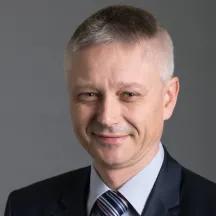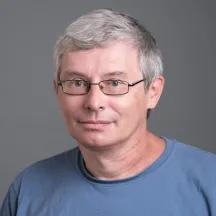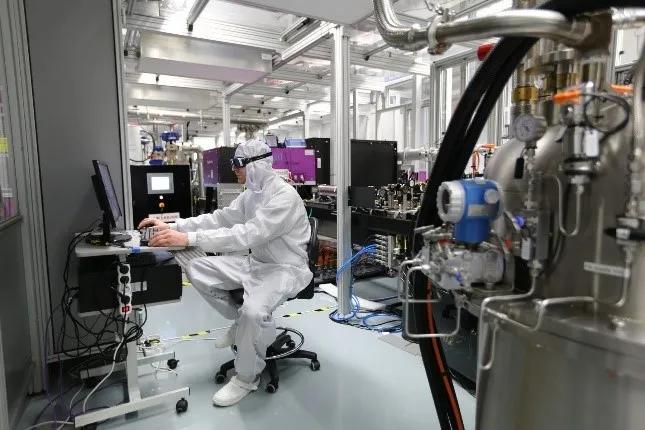Ing. Tomáš Mocek, Ph.D.
Ing. Libor Juha, CSc.
Ing. Lukáš Masopust, MBA
The mission of the High Power Systems Section, the HiLASE Centre, is to contribute to the development of power photonics, to push the boundaries of laser technology beyond the current limits, and to better understand the fundamental aspects of laser-matter interaction and high energy density physics. The Centre is located in Dolní Břežany and uniquely combines scientific excellence with application potential, with a focus on technological development and high-tech applications of lasers tailored to the specific needs of industry and science.
The primary goal of our research is the experimental development of a new generation of pulsed solid-state diode-pumped lasers with high average power in the order of kW and high repetition rate. The lasers we are developing are thus significantly more powerful, compact, stable, and maintainable than conventional pulsed diode-pumped lasers.
Since 2016, we have been successfully operating the unique BIVOJ laser system - the world's first ever high-energy diode-pumped solid-state laser with nanosecond pulses in the kilowatt class. We have also developed the compact picosecond laser system PERLA® in-house. It is not only being developed further, but we also offering it in the form of two products: PERLA®100 (with an average power of 100 W and a maximum pulse energy of 20 mJ) and PERLA®500 (with an average power of 500 W and a maximum pulse energy of 10 mJ). For more information on the technical parameters of these lasers, please refer to the product handout.
Within applied research, we focus mainly on the following three areas:
· Laser Shock Peening (LSP) which increases the durability of materials used, for example, in aerospace or energy production;
· Laser Micromachining (LMM), which increases the added value of materials and their potential applications;
· Laser Induced Damage Threshold (LIDT), which determines the damage threshold limits of optical components in a laboratory awarded with the ISO 9001 quality certification.
Our mission is to be a reliable partner for the development of new industrial processes for which suitable laser sources do not yet exist on the current market. The main possibilities of using the "know-how" of the HiLASE infrastructure are:
- collaborative and contractual research;
- academic research;
- optimisation of laser technologies and processes;
- Open Access (for projects of external users);
- raising a new generation of researchers in collaboration with universities, most notably CTU in Prague, Charles University, VSB Technical University of Ostrava, Palacký University Olomouc and Technical University Liberec.
Together with the Institute of Plasma Physics of the CAS, we participate in the operation and further development of a joint facility, the PALS Centre. The HiLASE and PALS laser centres are members of the international Laserlab Europe network of laboratories and provide a significant part of the capacity for user experiments under Open Access.
The vision of the HiLASE Centre is to become a respected leader in the area of high-power laser application and the first choice for both businesses and research organisations looking for innovative laser technologies to use on Earth and beyond. With our work, we want to push the boundaries of laser technologies and contribute to further development of sustainable economy, both on the national and the European scale. At the same time, we aspire to inspire both young and more advanced laser scientists, engineers and entrepreneurs.
Scientists from our section are members of large international teams, which conduct experiments in leading laboratories of global importance, such as Linac Coherent Light Source (USA), Free Electron LASer in Hamburg (Germany), SPring-8 Angstrom Compact Free Electron Laser (Japan).
Aside from laser physics, our experts also work in many other frontier science fields, such as:
· plasma and ionised media physics
· high energy density physics and extreme states of matter
· high energy chemistry
· atomic, ionic and molecular spectroscopy
· space-borne lasers
· laboratory astrophysics
· planetology
· astrobiology
· biophysics
· nanotechnology
· nanophotonics
· plasmonics
The HiLASE Centre has achieved several remarkable milestones, which include the following world records:
Last but not least, the HiLASE Centre is a member of several consortia that bring together innovative organisations from the world of lasers and optics or the circular economy: ReMade@ARI, AILU, EPIC, Czech Optical Cluster, Brain4Industry, STAR region, and more.




